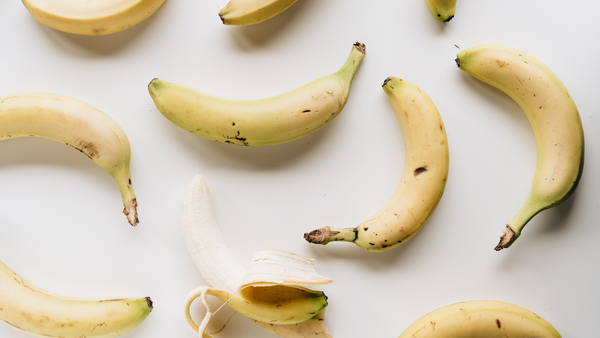If you’ve ever looked through a microscope, you’ve likely encountered the microflora and microfauna that cover nearly every surface of the world. The term “human microbiota” refers to the trillions of microorganisms living on and in us. While some bacteria can cause infection, the vast majority of microbes are harmless. In fact, the human microbiota helps keep all our bodily systems functioning properly. To support human health and well-being, probiotics are microorganisms that offer health benefits to their host.
How Probiotics Support Gut Health
Considering probiotics support the microbiome throughout the digestive tract, it makes sense that they can improve digestive health and aid nutrient absorption. But the power of probiotics goes far beyond a healthy gut. Recent studies have demonstrated the role of the microbiome on brain function. The “microbiota-gut-brain axis” demonstrates how bacteria in the gut can influence the central nervous system. To understand how probiotics support gut health, here’s an overview of the microbiota-gut-brain axis.
The Microbiota-Gut-Brain Axis
To understand how probiotics support our health and medical conditions, the “gut-brain axis” (GBA) is a good place to start. This relationship refers to the two-way conversation between the GI tract and the nervous system. In one direction, the brain can influence intestinal activity. For example, your digestive juices can start flowing from just thinking about food.
But remember, the GBA is a two-way street. Just as the brain impacts digestion, gut health can impact mental functioning, emotional regulation, immune health, and the central nervous system. An upset stomach can be the product or the cause of anxious or depressive behaviors.
The Enteric Nervous System
A major player in the gut-brain axis is the enteric nervous system (ENS). Enteric means “relating to the intestines,” and the ENS comprises the neurons and neurotransmitters that line the entire gastrointestinal system, from the esophagus to the rectum. If you’ve ever heard the digestive tract referred to as the “second brain,” this is why!
While the ENS can function independently of the central nervous system (CNS), the two are interconnected. The ENS and CNS constantly exchange information through neurotransmitters (like dopamine and serotonin) and hormones (like cortisol).
Microbial Friends with Benefits
Between the gut and the brain, there’s already a lot going on. But there’s another key player: microbes! While the roles and actions of GBA have been known for decades, the role of microbes inside the body has only recently been revealed. Every person’s unique microbiome helps maintain homeostasis for that person. From their home in the gut, the microbes communicate to the brain through the same passages that connect the enteric and central nervous systems.
However, if there is an imbalance of healthy microbiota, their ability to boost immunity and regulate body systems weakens. As a result, an out-of-whack gut microbiome can potentially lead to increases in blood sugar, cholesterol, and weight. But because of the GBA, the impacts extend beyond the physical. Recent research points to evidence that the microbiome can influence mental health as well as the gastrointestinal and neurobehavioral symptoms of autism.
Best Probiotics for Gut Health
Understanding the interconnectedness of the microbiota-gut-brain axis is a revelation for many reasons. Not only does it represent a fascinating connection between humans and the microbial world, but it also offers up a key opportunity. You can influence and alter your microbiome by changing your diet. Probiotics in supplements and fermented foods can boost the homeostasis of the microbiome in your gut.
Overall, probiotics can affect the microbiota-gut-brain axis to improve mental and physical health.

What Are Probiotic Supplements?
Probiotic supplements are products ingested orally, containing specific probiotic strains that benefit your health. Just as other dietary supplements can make up for vitamin or mineral deficiencies, a probiotic supplement can add to the gut's microbiome by introducing new or more strains of healthy bacteria.
How Are Probiotics Named?
If you’ve ever picked up a bottle of probiotics, the description might seem a bit confusing. However, the combination of Latin words and numbers is far from random. Probiotics are named using a specific system. First is the broader category, or genus name, followed by the species name. Most species have also differentiated into multiple strains, often labeled by an alphanumeric code. This code is called the “strain name.”
For example, this might look like: Lactiplantibacillus plantarum PS128 or Lacticaseibacillus paracasei PS23. Given that names like those are quite a mouthful, probiotics are often referred to simply by their strain names, such as PS128 and PS23, respectively. Different strains can have different effects, with some being more general and some more specific. For example, PS128, found in Neuralli MP, has been shown to have positive physiological effects in Autistic people and folks with Parkinsons.
The Beneficial Bacteria & Yeast in Probiotic Supplements
The most common genera of microbes used in probiotic products include Lactobacillus, Bifidobacterium, Streptococcus, Enterococcus, and Bacillus, and one genus of yeast, Saccharomyces. The Escherichia coli strain Nissile 1917 is also used as a probiotic.
The Effects of Probiotics
What specifically do probiotics do to enhance gut health (and by way of the GBA, health in general)? The complete picture of a probiotic’s function depends on the specific strain, but the health effects generally fall into three different categories: nonspecific, species-specific, and strain-specific mechanisms.
Nonspecific Mechanisms
These are the benefits that most probiotics offer, no matter the species or strain. Nonspecific mechanisms include limiting the growth of harmful pathogens, producing short-chain fatty acids, and reducing the pH in the colon.
Species-Specific Mechanisms
Different species of probiotics also have their respective effects on human health. Some aspects that vary with probiotic species include vitamin synthesis, enzyme activity, metabolism of bile salts, and the absorption of toxins. For example, Lactococcus lactis, Lactobacillus reuteri, and Bifidobacterium adolescentis are known to synthesize the B vitamins riboflavin and folate, while other probiotic species do not.
Strain-Specific Mechanisms
The strain of a probiotic can have even more precise effects. These can range from impacting cytokine production and immune health to effects on the nervous system. One example of strain specificity is in the species L. plantarum - the L. plantarum PS128 strain is known for its neurological activity, while L. plantarum I1001 impacts vaginal health, and L. plantarum UALp-05 is beneficial for IBS.
From Sauerkraut to Supplements: How to Add Probiotics to Your Diet
By adding beneficial bacteria to your diet, you can nurture and develop a healthier microbiome. Many commonplace foods already contain probiotics or prebiotics (foods that support the growth of beneficial bacteria) and can enhance gut health. In addition to foods, dietary supplements offer specificity and control over the type and amount of probiotics you add to your diet. Between the two, you can find a way to add probiotics to your diet that best fits your needs and lifestyle.

Probiotics From Food
Can you get probiotics from your normal diet? Yes! Many foods contain probiotics; in fact, fermented foods made from plant and animal products are often the sources for the probiotic strains used in supplements. Other foods provide the prebiotic nutrients that beneficial bacteria need to grow. Here are some common superfoods that act as prebiotics or contain probiotics themselves.
Setting the Stage: Prebiotics
Prebiotics are foods that stimulate the growth of probiotics. Think of them as fertilizer in a garden. Probiotics can grow without them, but prebiotics can help support a more lush and fruitful crop. How does this work? Prebiotic foods contain the favorite foods of probiotics: complex carbohydrates like fiber and starch. Below are some common foods that set the stage for a healthy gut microbiome.

Bananas
The nutritional content of a banana changes drastically as it ripens. On the greener side, a banana has high amounts of resistant starch and lower sugar content, giving it prebiotic qualities. A ripe or overripe banana, however, has a high sugar content and a reduced amount of prebiotic starch (but is full of antioxidants!). So, while bananas can be a good source of prebiotics, it really depends on when you eat them.
Honey
The oligosaccharides (a type of carbohydrate) found in honey are a favorite food of Lactobacillus and Bifidobacterium bacteria, making honey a popular prebiotic. Additionally, honey’s antimicrobial properties also work synergistically with probiotics to fight off bad types of bacteria.
Oats
Oats contain beta-glucan fiber and some resistant starch, both of which support the growth of probiotic microbes. Beta-glucan fiber and resistant starch are carbohydrates that are non-digestible in the small intestine. Because of this, they are left to be fermented by the colon’s bacteria. Eating whole oats can support a healthy gut microbiome.
Packing a Probiotic Punch
While prebiotic foods build the metaphorical fertile soil for probiotics to thrive, other common foods actually have probiotics in them!

Green Tea & Kombucha
The first item on the list is an exception. Green tea alone doesn’t actually contain probiotics. However, it does contain beneficial polyphenols that are high in antioxidants. These healthy properties make green tea a reliable vessel for probiotics. When perusing the tea aisle, you’ll often notice brands of green tea with probiotic additives.
Kombucha, on the other hand, is tea fermented with a SCOBY (symbiotic culture of bacteria and yeast) and can contain probiotics. However, many commercialized kombucha brands pasteurize their drinks to make them shelf-stable, negating any digestive health benefits of the drink’s probiotics. If you find raw kombucha or brew it on your own, you can feel more confident that the probiotic cultures will be active.
Yogurt & Kefir
Yogurt and kefir are both cultured dairy products. That doesn’t mean they know about the food, music, and lifestyle of a place. In this case, “cultured” refers to fermentation. To make yogurt or kefir, lactic acid bacteria are added to milk by using a starter culture. Kefir cultures can also be added to soy, coconut, or oat milk to avoid dairy.
Kimchi & Sauerkraut
Fermented cabbage, in all its forms, offers a slew of probiotics. Both kimchi (made from Napa or Chinese cabbage and other vegetables) and sauerkraut (made from red or green cabbage) take advantage of probiotics to create their tangy signature tastes and gut health benefits.
The Advantage of Probiotic Supplements
While it’s a great idea to incorporate probiotic-rich foods into your diet, they might not be able to provide the same holistic benefits as a probiotic supplement. An occasional cup of kefir or serving of kimchi will definitely support your gut microbiome, but they lack the consistency and specificity of a dietary supplement. Taking a probiotic supplement regularly allows you to:
- Target a specific result for your health. Knowledge is power! Specific probiotic strains provide a certain degree of predictability. You know exactly which strains of probiotics they contain and how much. If you have a specific health issue you are trying to address, fine-tuning all the possible variables is critical. From immune health to regulating your digestive tract, probiotics allow for specificity.
- Add probiotics to any diet. Allergies to dairy, soy, and gluten can exclude some people from access to food-based probiotics. Similarly, a high-sugar diet can disrupt the balance in the gut microbiome, and any probiotic foods (like kombucha and kefir) can have added sugars. Probiotics, on the other hand, have no added ingredients, meaning they can fit into any diet!
How to Get Started with Probiotics
Starting to use a probiotic product can feel intimidating. Even your local grocery store likely has upwards of twenty options, and online shopping can make the choices really feel endless. Here are some tips for getting started with a probiotic supplement.
- Use a reputable product. As stated above, there are so many products out there, and the FDA has yet to standardize an approval process for probiotics. That being said, you can find reputable brands that have been tested and analyzed in peer-reviewed studies. While they may sit at a higher price point, you can feel assured that you're getting the quality and quantity of the probiotic promised.
- Start slowly and be okay with trial and error. If you don’t notice any changes within 1-3 months, try a different strain. At first, you might experience bloating and an increase in gas. While this is normal as your body adjusts to its new microbial balance, discomfort shouldn’t last. If it does, that’s a clear sign that that strain is not for you.
- There is no holy grail probiotic. Just as everybody’s microbiome is unique to them, each person might respond differently to the same probiotic. Something that works for your friend may not work for you. By the same token, your microbiome shifts with age, stress, and the environment, among other things. Therefore, you may respond best to different strains at different times in your life.
- Get advice from a health care professional. Probiotics are not always advisable for everyone. When adding any supplements to your diet, it's a best practice to consult with your health care provider to get their advice and guidance. A professional can also give guidance on what strain might be most beneficial for you based on your needs and goals.

How to Choose the Best Probiotic Supplement for You
There are so many factors that can influence your individual microbiome, including genetics, diet, exercise, geographical environment, medications, stress, and more. And several of these variables are just that: variable! As a result, your specific microbiome can change throughout the course of your life. In fact, apart from birth, one of the most dramatic shifts in the gut microbiome occurs during old age.
So, how do you choose the best probiotic for you?
CFUs & Resiliency
Choose a product with at least one billion colony-forming units (CFU) of beneficial bacteria through the best-by date. Most probiotics advertise having between one and ten billion CFUs. While this is often just a number and shouldn’t sell you on one probiotic versus another, it’s worth consideration. It is also important to consider if the CFU count is derived from the time of manufacturing or guaranteed through the best-by date with proper storage. Often, you will lose a significant amount of CFU from the manufacturing date to the best-by date. This means 1 billion CFUs could easily turn into 100 million CFUs or less, which may affect the probiotics ability to provide a health benefit.
On the same note, consider the method of delivery for the probiotic. Some probiotic strains might be a good match, but if they aren’t packaged properly, they will dissipate in your stomach juices. Look for strains that are inherently acid-resistant or packaged in acid-resistant capsules to ensure you are getting the full benefits.
Look for Clinical Studies
Some probiotics have been more thoroughly studied than others. Choosing a product that includes Lactobacillus, Bifidobacterium, or Saccharomyces is a good place to start as these species have been well-researched. That being said, don’t be hesitant to do your own research as well. As pointed out above, different strains of the same species can influence the gut-brain axis in a variety of ways. Check to see if there have been clinical trials using that specific probiotic strain.
Targeted Health Concerns
Look for a probiotic strain that’s been tested for the specific health concern you are addressing. Depending on your personal health plan, there will likely be a probiotic strain best suited to you. Some strains like Lactiplantibacillus plantarum PS128* target the gut-brain axis by regulating neurotransmitters and hormones, boosting SCFA production, and improving motor control. Others, like Lacticaseibacillus paracasei PS23,* have key anti-aging benefits like boosting mitochondria function and replenishing brain-derived neurotrophic factors that support memory and cognition.
Feed Your Microbiome
Even when adding probiotics to your diet, remember to feed them too! Incorporating some of the prebiotic foods described above will help your microbiome flourish.

Should Healthy People Take Probiotics?
Probiotics are a critical part of any diet! But a healthy person might not need to go out of their way to use supplements. In general, the best source of probiotics for gut health is food. As long as you make sure you are incorporating prebiotics and probiotic-rich foods into your diet, you may not need to worry about sorting through different probiotic strains.
If you have a specific medical condition, however, probiotics can play an important part in regulating your digestive health, immune health, and mental health, among others. Finding the right probiotic for your health can make a world of difference. Bened Life’s probiotic strains aim to do just that: offer specialized neurologically active probiotics that offer you the most concrete, evidence-backed health benefits.
Learn more about what Bened Life has to offer and try PS128 probiotics today!
*These statements have not been evaluated by the Food and Drug Administration. This product is not intended to diagnose, treat, cure, or prevent any disease. 
Recommended reading:
Which Probiotics are Best for Mood?











